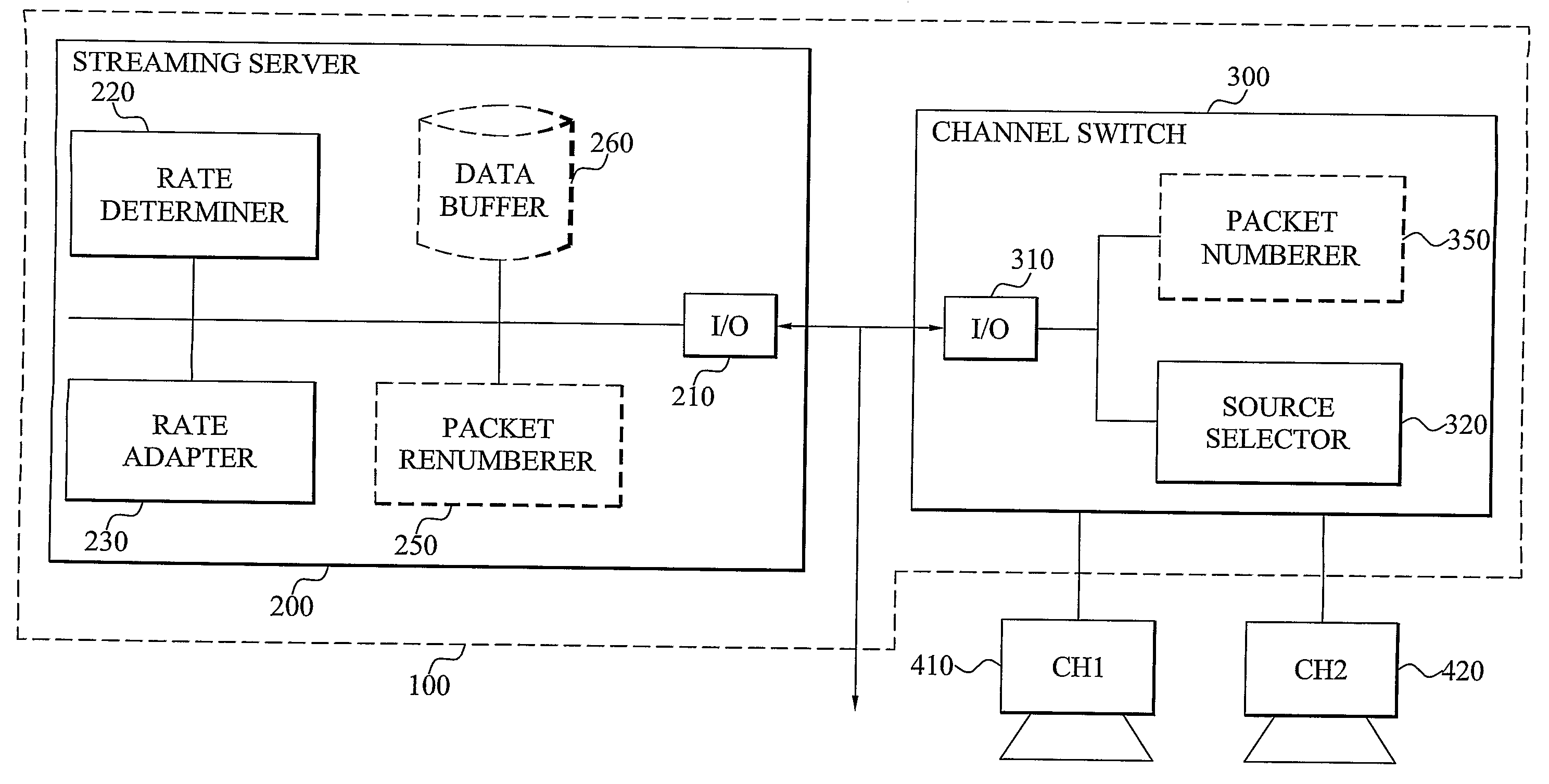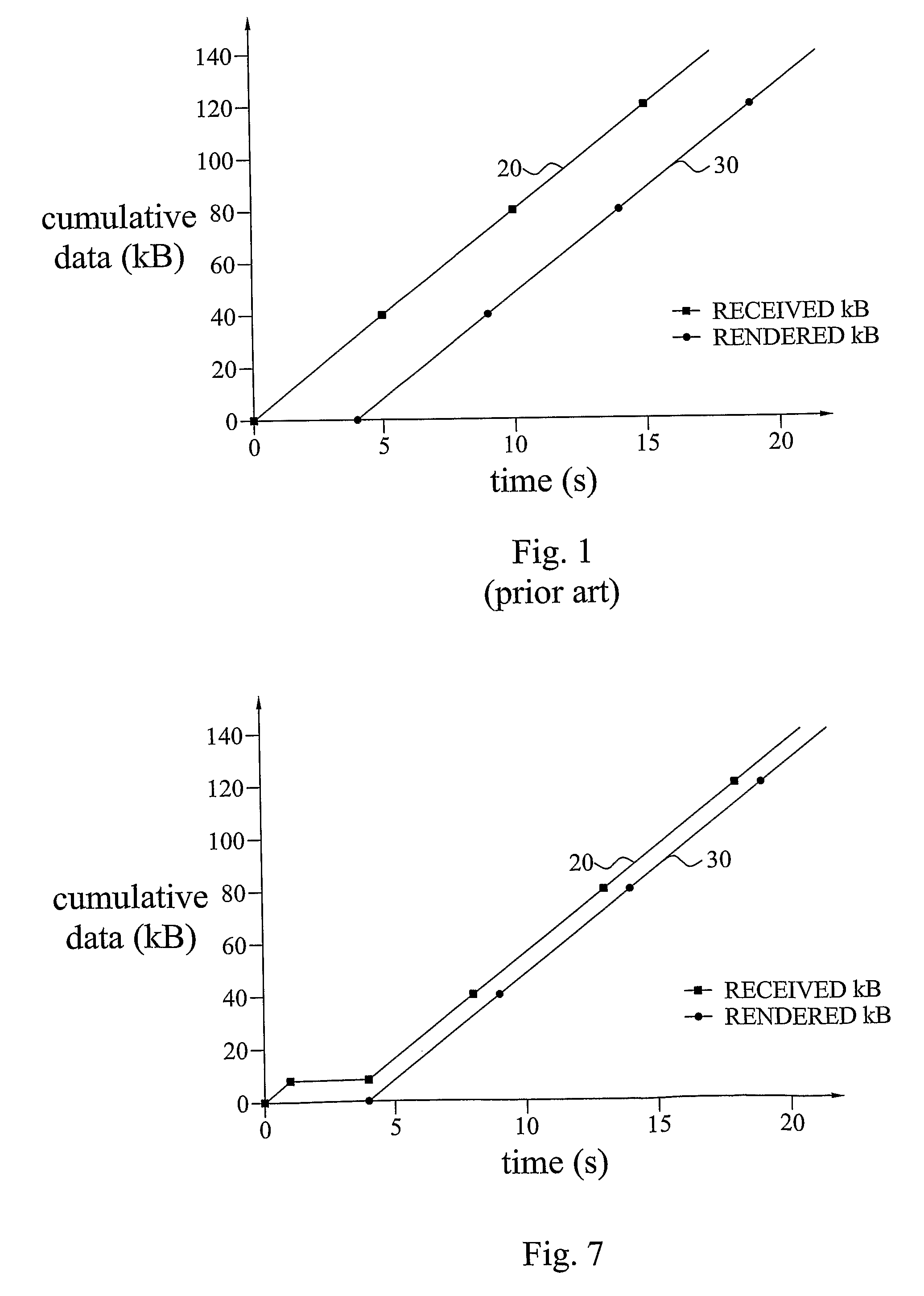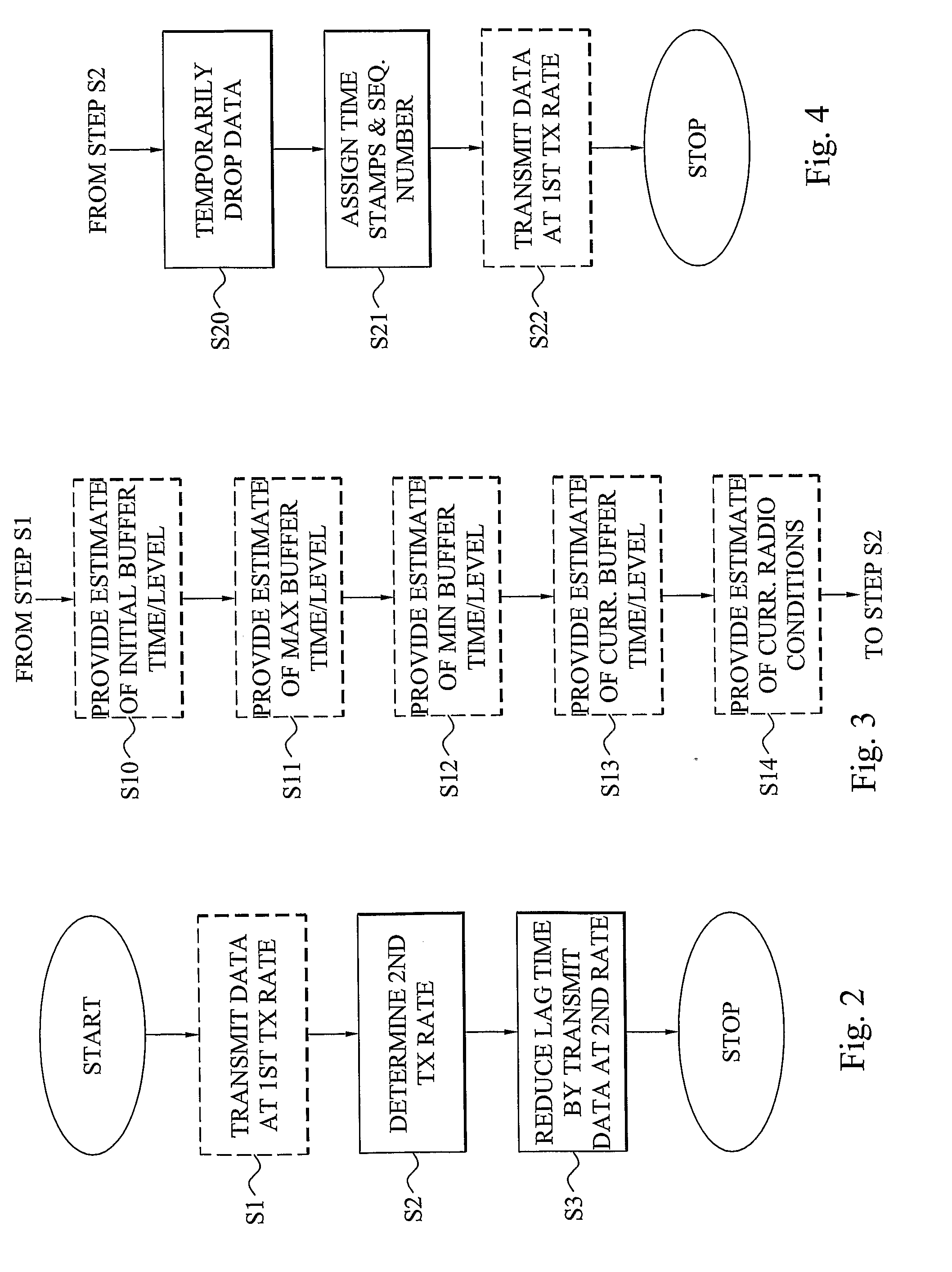Multimedia Channel Switching
a multi-media channel and channel switching technology, applied in the field of multi-media channel switching, can solve the problems of reducing time and still performing buffering of about four seconds, and achieve the effect of decreasing user-perceived tim
- Summary
- Abstract
- Description
- Claims
- Application Information
AI Technical Summary
Benefits of technology
Problems solved by technology
Method used
Image
Examples
first embodiment
[0098]This input information may in a first embodiment be a notification of the model and possible brand of the user terminal. The multimedia provider can then have access to a list of possible terminal models and brands, which specify the initial buffer level employed by such a user terminal model. Information of the model and brand is typically already transmitted in the Hyper Text Transfer Protocol (HTTP) request that is used for a multimedia channel request and channel switch request. This means that such a HTTP request can be used as information source by the multimedia provider by extracting the necessary model and brand information from the request. Another possibility could be to extract the terminal model information from the model attribute of User Agent Profile (UAProf) as used for HTTP and Wireless Application Protocol (WAP) or RTSP as, for example, described in the 3GPP document [2].
[0099]It is anticipated by the present invention that the user terminal instead could ac...
embodiment 130
[0157]This rate adapter embodiment 130 could also be employed for temporary applying a zero transmission rate but without any packet dropping.
[0158]FIGS. 18 to 20 illustrate three different rate adapter embodiments 130. It is anticipated by the present invention that a multimedia provider according to the present invention can be configured to have only one of these embodiments. In alternative embodiments, the rate adapter 130 could be operated according at least two of the illustrated embodiments. For example, the rate adapter could have a packer dropper 131, a packet selector 132, a request processor 133 and a packet processor 134. This means that the rate adapter 130 could be regarded as a multi-mode unit that can be operated according to, in this case, at least two different rate adapting modes. The choice of a particular rate adapting mode to employ (FIG. 18, FIG. 19 or FIG. 20) could be based on different parameters including, the actual multimedia data that is transmitted, th...
PUM
 Login to View More
Login to View More Abstract
Description
Claims
Application Information
 Login to View More
Login to View More - R&D
- Intellectual Property
- Life Sciences
- Materials
- Tech Scout
- Unparalleled Data Quality
- Higher Quality Content
- 60% Fewer Hallucinations
Browse by: Latest US Patents, China's latest patents, Technical Efficacy Thesaurus, Application Domain, Technology Topic, Popular Technical Reports.
© 2025 PatSnap. All rights reserved.Legal|Privacy policy|Modern Slavery Act Transparency Statement|Sitemap|About US| Contact US: help@patsnap.com



